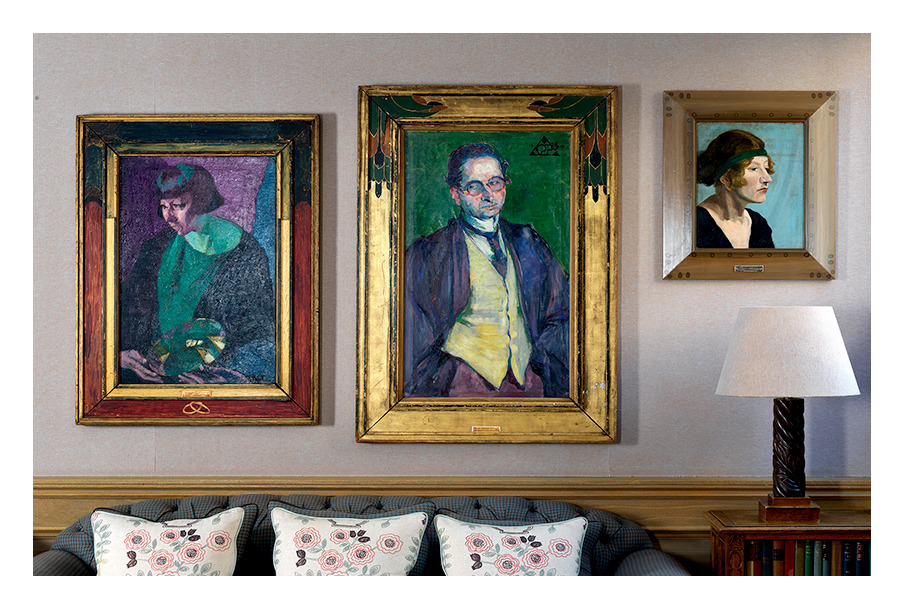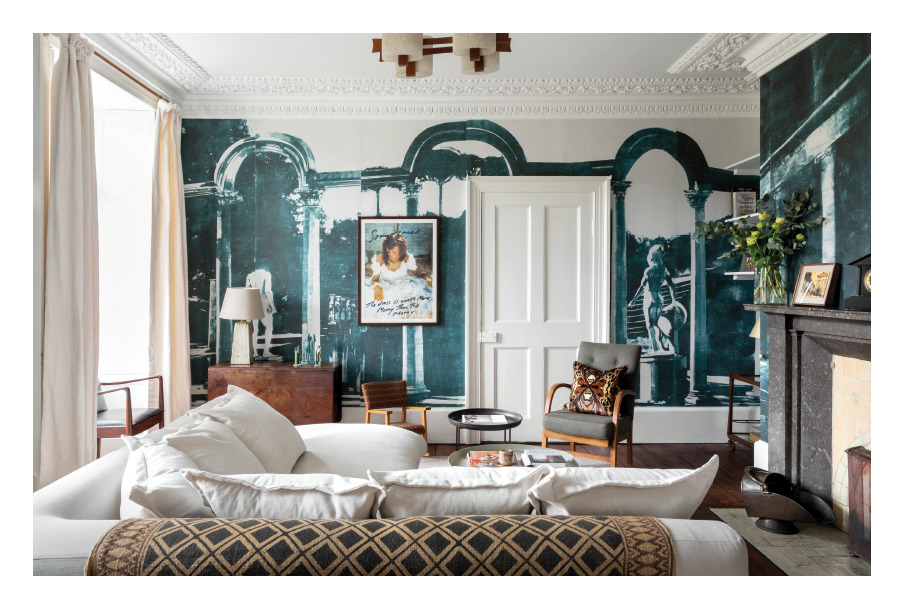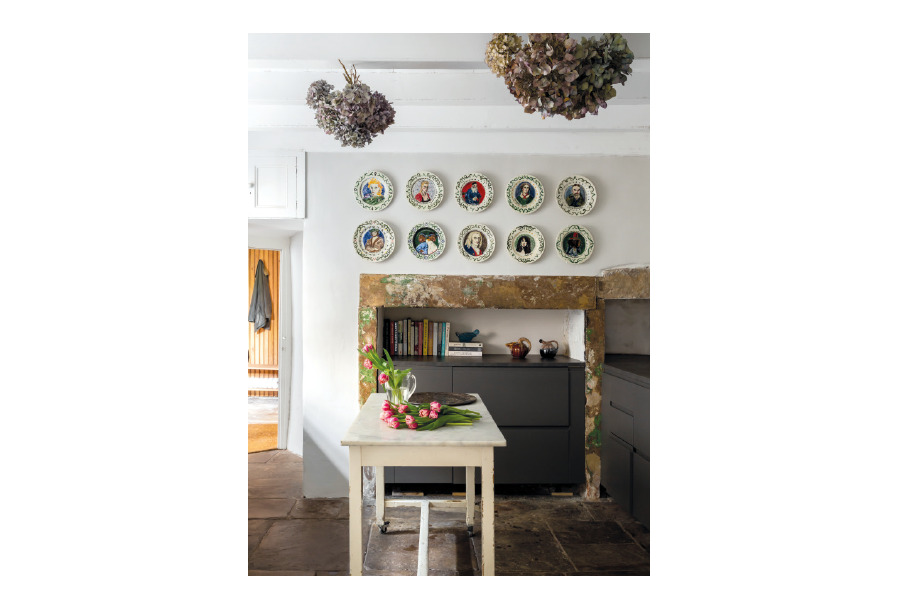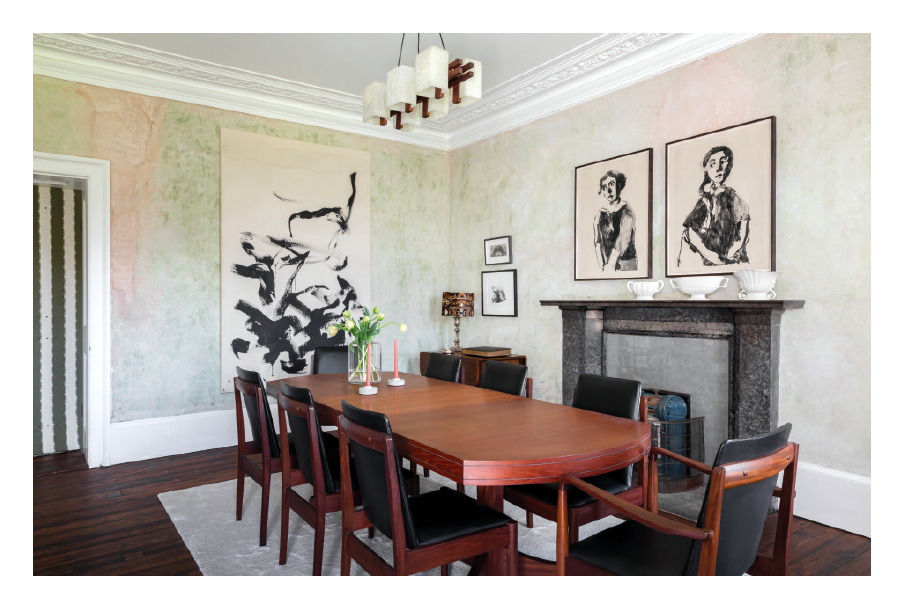Selected with care and properly displayed, art is so much more than simply a decorative afterthought; we ask the experts for their tips on curating a home collection.

They say a picture is worth a thousand words, but what does the art you display in your home say about you? A thoughtfully curated collection will become an integral element of your home’s aesthetic, equally as important as paint colours and furniture choices. You need only look to the best hotels for evidence of this – 45 Park Lane, The Standard and the Firmdale Hotels are all excellent examples of how art can be used to enhance interiors.
Kit Kemp, founder and creative director of Firmdale Hotels and Kit Kemp Design Studio tells us: “A beautifully crafted interior is nothing without a carefully thought out and developed art collection. You can curate your collection in one go, or build it slowly over time, but it should always be a personal and joyful reflection of yourself.” She goes on to add: “I design every space with art in mind. Whether it’s the main focal point of a room, accented subtly or simply purposed as a gallery wall, building an art collection that captures your imagination doesn’t have to be unattainable.”
If you’re new to the world of art, though, building a collection can certainly feel unattainable. Gabrielle du Plooy, director at Zebra One Gallery understands better than most how “opaque and confusing” the global art market can be. The Hampstead based gallery has been established since 1978 and exhibits and sells art from some truly remarkable artists – David Hockney, Andy Warhol, Banksy, Picasso, Francis Bacon and Roy Lichtenstein to name but a few – as well as offering bespoke framing using conservation museum standards, and art consultation and hanging services. “We give clients the confidence to understand that to love the artwork is the first investment,” she tells us.
Beyond that, when it comes to making an actual financial investment, she explains that there are two art markets, the primary and the secondary. “The primary market involves artwork that comes directly from the artists and the galleries or agents who represent the artist. It is the first time the artwork is released and put up for sale,” she reveals. “Once the artwork is purchased on the primary market, if it were then to be sold on, it enters the secondary market. Prices for artworks on the secondary market are determined by factors such as who the artist is, the condition, provenance, and the significance of a work within the artist’s portfolio. If an artist is related to a top gallery or is represented in an influential public or private collection, it will have a positive impact on the price.” As with any investment, it is important to do your due diligence, and a great starting point is to get to know an independent art dealer, gallery or consultant, who will be best placed to advise you, she says.
(kitkemp.com; zebraonegallery.com)
Becoming a collector
Building your home collection is a unique and personal experience. Fair director of the Affordable Art Fair in London, Hugo Barclay shares his tips for finding art you will treasure for a lifetime.
Do your research
This is the fun part – get out there and see art! Go to exhibitions, galleries, and art fairs, and follow artists you like on Instagram. Get a sense of the type of art that resonates with you to help learn what your style is. If you’re looking for art with your partner or friends, I recommend getting a group chat together to share upcoming shows you’d like to attend. You can also hunt for art from your phone: fill your social feed with artists and galleries to learn about their creative practice and get a first look at their work behind the scenes.
Ask the expert
You’ll never find a gallerist who doesn’t want to share the stories of their artists, so don’t be afraid to ask lots of questions. From the medium and materials, to the artist’s inspiration and their journey into art – the more informed a purchase you make, the more treasured. And you’ll be able to impress your house guests.
Buy what you love
Once you know what you like, don’t be swayed by others’ opinions, or what you think you should buy. Allow your art buying to be driven by feeling, across all emotions. Whether that’s the weird and playful part of you, or your connection to certain stories and values… If you need more time, some galleries even allow you to try out an artwork at home to make sure it’s right for you.
Be a modern-day patron
Support living, younger artists. Whilst big names are impressive, for me, nothing beats supporting emerging talent. Buying from living artists who are emerging in their career means your purchase will truly impact their practice. The perfect place to hunt out rising stars is our Recent Graduates exhibition at Affordable Art Fair Battersea Autumn this October, or the Solo Contemporary exhibition at British Art Fair.
Set a budget
This bit requires a bit of planning. Think about how much you feel comfortable spending on an artwork, and how regularly you might like to acquire a new work – and try and stick to it. At our fairs, we ensure there are plenty of affordable pieces under £1,000 and under £500. But if you find something you adore and it’s a little out of budget, ask the gallery if you can pay in interest-free instalments with schemes like Own Art.
Enjoy the process
What you like today might not be what you like tomorrow, and that’s OK! Release the pressure of buying the perfect piece. This is art – nothing is perfect. Rather, appreciate the process of discovery and recognise that taste evolves as we change over time. If you’re buying one of your first artworks, don’t over think it – not every piece needs to fit together, and more often than not, you’ll find the perfect place in your home to display a work, rather than looking for something that has to fit above the sofa.
Affordable Art Fair runs three times a year in London, with the autumn edition taking place from 19-22 October in Battersea Park. Book tickets at affordableartfair.com
Curating your art
Lizzie Glendinning, co-director of Woolwich Contemporary Print Fair established the interiors consultation service, Living With Art | Curating Contemporary Art in the Home with her gallery, Brocket London as a response to working with clients to find new ways to engage with their collections. Here, she shares her top tips for best showcasing your collection.
Colour and texture
It is not necessarily about a colourway running through a whole space, which can often look staged and inauthentic. Rich and diverse layers of tone and textures can be achieved through fabrics, raw materials, wall coverings and objects. Fine art can enhance the visual story and bring a narrative together through its own palette or texture. Is there a pattern or texture within the bones of the room you are designing that can be drawn out, or subtly referenced within a work of art?
Inspiration
Enhance the mood you are looking for. There’s no point placing a distraction in a place you need to concentrate. Want some escapism while in the bath, or something to create discussion in the dining room? You might just need to re-jig the pieces you already have to view them through a new lens.
The hang
This is when you can really create a unique story. The general feeling is that the centre of the picture should sit 156cm from the ground, though this is completely fluid if creating a picture wall of multiple pieces, or if you have a picture or dado rail which might create unbalance. Old houses and wonky ceilings probably require a ‘by eye’ approach, but always use a spirit level when hanging pictures, especially if they need to be screwed into the wall.
Picture walls are a great opportunity to bring thematic works together or create vibrancy in your home – particularly if you have a lot of work and nowhere to store it. We find long corridors or staircases are great spaces for people to linger over an ‘academy hang’ where a theme, colour palette or story guides you along to the next piece and ultimately though the space. Utilise the tools at your disposal. It’s not all about nails in walls. Have a picture rail? Revisit traditional methods and hang works from it, you will be so glad you did, and it will draw your eye to the work itself.
Framing
Not all work needs framing, but it sure can enhance a work of art. It really demonstrates that the collector has considered the work of art as much as their soft furnishings and kitchen finish – in many cases the artwork will have cost much more than these. We love a tray frame for canvases to finish off edges that can sometimes have paint smudges or staples in. For works on paper the current trend is float mounted, but if reframing older pieces that may be stained from previous acidic tapes or mounts, there are beautiful and sympathetic ways to mount – I often like a double mount or, more recently, have been playing with linen surrounds and wooden inserts to match the frame, giving more depth. Always use UV protected glazing, and, if money allows, an anti-reflective, museum standard glass.
Lighting
Generally, I don’t like central top lights in a room; moody and considered lighting is better for creating ambience and highlighting artworks. We regularly work with specialist lighting companies for bespoke projects alongside architects and designers, but for a more DIY rule of thumb, think daylight bulbs for ceiling mounted/gallery style art spots, and warm bulbs for your integrated painting lights (think older framed oils) and corner lamps.
For more details of the Living with Art service, see brocketgallery.com







